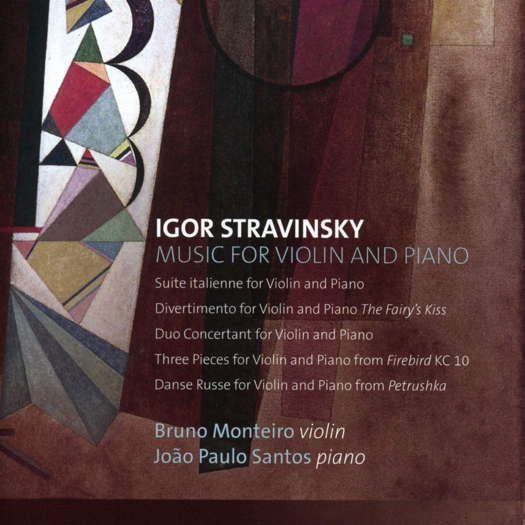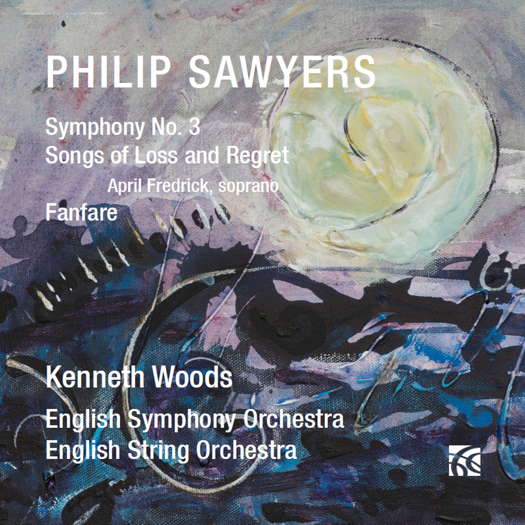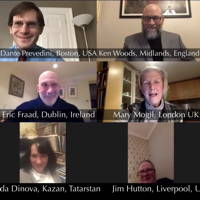- Hans von Bulow
- Imbi Tarum
- Malcolm Lipkin
- Melanie Ragge
- Andrew Ford
- British Arts Festivals Association
- George Lewis
- Ottawa

Gentle and Tender Stravinsky
GIUSEPPE PENNISI listens to violin and piano music by the Russian master
'The two players are an excellent duo: Bruno Monteiro on violin and João Paulo Santos at the piano.'
Igor Stravinsky was a prolific composer in all kinds of music genres, yet his chamber music is not generally well known. His chamber music production belongs to two different periods of his life and career. Firstly, when he moved to Switzerland during World War I and, especially after the war, when he transferred to Biarritz, where he developed a quite close collaboration with violinist Samuel Dushkin (1891-1976). Most biographers state that Stravinsky was unlikely to have written a string concerto had it not been for his publisher who introduced him to Samuel Dushkin. Secondly, when in the United States after World War II, he had a short-lived flirt with serialism and composed the experimental Septet in 1953.
As noted by musicologist Richard Whitehouse, the main reason for Stravinsky's interest in this violin and piano combination was out of pragmatic, indeed commercial considerations. Although commissions were still forthcoming in the period following World War I, the need to support his family as well as the inaccessibility of his Russian estate led him into becoming an active commercial musician. He sustained a secondary career as a well-paid pianist too. Dushkin proved an adaptable as well as a willing collaborator. He and Stravinsky worked intensively on the Violin Concerto premiered in Berlin in October 1931. The success of this work encouraged the composer to seek a longer-term partnership, not least when his concert engagements as a solo pianist were limited and his orchestral appearances diminishing due to the economic depression. The outcome was a program whereby Stravinsky and Dushkin toured England and France in 1934, America in 1935 and elsewhere until the composer's emigration to the United States in 1939.
This CD encompasses almost all the violin and piano music he wrote during his collaboration with Dushkin, namely Suite Italienne for Violin and Piano, the Divertimento for Violin and Piano The Fairy's Kiss, Duo Concertant for Violin and Piano, Three Pieces for Violin and Piano from Firebird and Danse Russe for Violin and Piano from Petrushka. Thus, it is not an anthology or a selection but a complete recording of a very special period of Stravinsky's artistic life. In those years, he was in transition from what is generally named his Russian period to what is generally named his neoclassical period. In these violin and piano works, the careful listener can hear influences of both periods. For instance, the first three pieces owe a lot to his interest in and love for Pergolesi, while the last two compositions are full of Russian colours and flavours, also because they're based on works from his previous Russian period.
The two players are an excellent duo: Bruno Monteiro on violin and João Paulo Santos at the piano. They are both Portuguese and have major international careers. Santos is a well-known conductor too and is closely associated with the Lisbon Opera House.
Originally made in 1925 and given the somewhat fanciful title of Suite d'après des thèmes, fragments et morceaux de Giambattista Pergolesi, the Suite Italienne opens with an Introduzione. Its melodic poise and piquant harmonies set the tone for what is to follow.
Listen — Stravinsky: Introduzione (Suite Italienne)
(track 1, 0:00-0:42) © 2020 Quintessence BVBA :
Next comes a Serenata. Its essentially vocal quality translates naturally to the violin, while the energetic Tarantella features some notably incisive interplay between the two instruments. The heart of the suite comes with the Gavotte. Its theme is a link between the Baroque and the Modern eras.
Listen — Stravinsky: Gavotte con due variazioni (Suite Italienne)
(track 4, 0:00-0:42) © 2020 Quintessence BVBA :
The Scherzino places no mean emphasis on phrasing and intonation. The final two movements unfold continuously: the Minuetto builds from its chaste beginning to an eloquent climax. The Finale sets off at an energetic pace and exudes engaging humour on its way to an effervescent conclusion.
Listen — Stravinsky: Finale (Suite Italienne)
(track 6, 4:09-4:54) © 2020 Quintessence BVBA :
With Suite Italienne, the Duo Concertant is Stravinsky's only other original work for his partnership with Dushkin. The opening Cantilene is notable for a particularly close integration of the instruments, drawing a great deal of impetus from the contrast between its seamless violin lines and detached piano chords, prior to the quiet though uncertain close.
Listen — Stravinsky: Cantilene (Duo Concertant)
(track 13, 2:46-3:26) © 2020 Quintessence BVBA :
There follow two movements that are entitled Eglogue. The first of these is a study in pungent harmonies and rhythms, while the second features gently undulating violin phrases and pensive responses from the piano. The Gigue has the feel of an oblique take on the Tarantella dance-measure, with the violin's frequent changes of rhythmic emphasis.
Listen — Stravinsky: Gigue (Duo Concertant)
(track 16, 4:36-5:28) © 2020 Quintessence BVBA :
After this, the final Dithyrambe feels the more understated in its inwardness. For all that it reaches the work's climax.
The other pieces are substantial arrangements made with Dushkin. The Divertimento is taken from Tchaikovsky's ballet Le baiser de la fée (The Fairy's Kiss). The adagio (Pas-de-deux) is charming.
Listen — Stravinsky: Pas de deux (The Fairy's Kiss)
(track 10, 2:35-3:27) © 2020 Quintessence BVBA :
The Three Pieces for Violin and Piano from Firebird and Danse Russe for Violin and Piano from Petrushka are paraphrases of the two ballets - pleasant but not on a par with the originals.
In short, this is a gentle and tender Stravinsky in his partnership with Dushkin.
Copyright © 24 July 2020
Giuseppe Pennisi,
Rome, Italy

CD INFORMATION - STRAVINSKY: MUSIC FOR VIOLIN AND PIANO
FURTHER INFORMATION - IGOR STRAVINSKY




